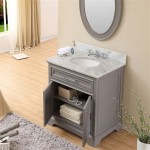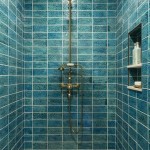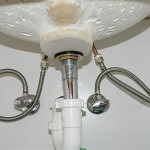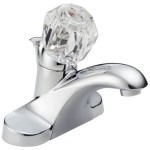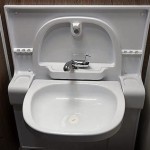Cleaning Bathroom Counters
Bathroom counters are high-traffic areas exposed to various substances, from toothpaste splatters and makeup residue to soap scum and hair products. Regular cleaning is essential not only for aesthetics but also for hygiene, preventing the buildup of bacteria and mildew. This article will explore effective methods and best practices for maintaining sparkling clean bathroom counters.
Choosing the Right Cleaning Products
Selecting appropriate cleaning products is the first step towards effective bathroom counter cleaning. The material of the countertop dictates the best cleaning approach. Natural stone surfaces like marble and granite require pH-neutral cleaners to avoid etching or damage. Abrasive cleaners should be avoided on these delicate surfaces. For laminate, tile, and solid surface countertops, a wider range of cleaning solutions, including mild abrasives, can be utilized. Always check the manufacturer's recommendations for specific cleaning instructions.
Commercial bathroom cleaners offer convenience and are formulated to target common bathroom grime. However, many individuals prefer natural cleaning solutions for environmental or health reasons. A simple mixture of white vinegar and water can effectively clean many bathroom surfaces. Baking soda can be used as a gentle abrasive for tackling stubborn stains. Essential oils, such as tea tree or lavender, can be added for a pleasant scent and their natural antibacterial properties.
Developing a Cleaning Routine
Establishing a regular cleaning routine is crucial for preventing the buildup of grime and maintaining a consistently clean bathroom counter. Daily quick cleans can significantly reduce the effort required for deeper cleaning sessions. Wiping down the counter after each use with a damp cloth can prevent the accumulation of toothpaste, soap, and water spots. Addressing spills immediately prevents staining and makes cleaning easier.
A more thorough cleaning should be performed at least once a week. This involves clearing the counter of all items, spraying the surface with the chosen cleaning solution, and allowing it to sit for a few minutes to loosen grime. A soft cloth or sponge can then be used to wipe the surface clean. Pay close attention to areas around the faucet and drain, which are prone to accumulating soap scum and mildew. Rinse the counter thoroughly with clean water and dry with a clean, dry cloth to prevent water spots.
Tackling Stubborn Stains and Buildup
Certain substances can leave stubborn stains on bathroom counters that require specific cleaning methods. Hard water stains can often be removed with a mixture of equal parts white vinegar and water. Apply the solution to the stain and allow it to sit for several minutes before scrubbing gently with a soft cloth or sponge. For mineral deposits, a paste of baking soda and water can be applied to the affected area and left to sit for a few minutes before scrubbing and rinsing.
Makeup stains can be particularly challenging to remove. Rubbing alcohol can be effective on some surfaces, but it’s crucial to test it in an inconspicuous area first to ensure it doesn’t damage the countertop. Commercial makeup removers can also be used to lift stubborn makeup stains from bathroom surfaces. For particularly resistant stains, a paste of baking soda and hydrogen peroxide can be applied and left to sit for a few minutes before scrubbing gently.
Preventing future staining is often easier than removing existing stains. Using coasters under toiletries can prevent rings and stains from forming. Regularly wiping down the counter after use prevents the buildup of grime that can lead to staining. Sealing natural stone countertops can also help protect them from staining and damage.
Maintaining a Clean and Organized Counter
Keeping bathroom counters clean and organized not only enhances the aesthetic appeal of the bathroom but also makes cleaning easier and more efficient. Decluttering the counter by removing unnecessary items reduces the surface area that needs to be cleaned and prevents the accumulation of dust and grime. Utilizing storage solutions such as drawers, shelves, and organizers can help keep essential items neatly stored and readily accessible.
Regularly cleaning and disinfecting items that are kept on the counter, such as soap dispensers and toothbrush holders, prevents the spread of bacteria and contributes to a more hygienic bathroom environment. Ensuring adequate ventilation in the bathroom can help prevent the growth of mildew and reduce moisture buildup, which contributes to a cleaner and healthier space.

Clean Diffe Types Of Bathroom Countertops Bond Cleaning In Adelaide

How To Clean A Bathroom Counter Cleaning Tips Maids By Trade

How To Clean Bathroom Sink Counters Daily Routine Periodic Deeper Cleaning Tasks

How To Clean Kitchen Countertops Reviews By Wirecutter
Best Bathroom Cleaning S Of 2024

How To Clean Bathroom Sink Counters Daily Routine Periodic Deeper Cleaning Tasks

How To Clean Bathroom Countertops And Keep Them Sparkling

Household S To Clean Bathroom Sink Countertops

Guide To Cleaning Quartz Countertops In Bathroom Granite Selection

Bathroom Cleaning Tips From Experts Metropolitan Bath Tile
Related Posts
